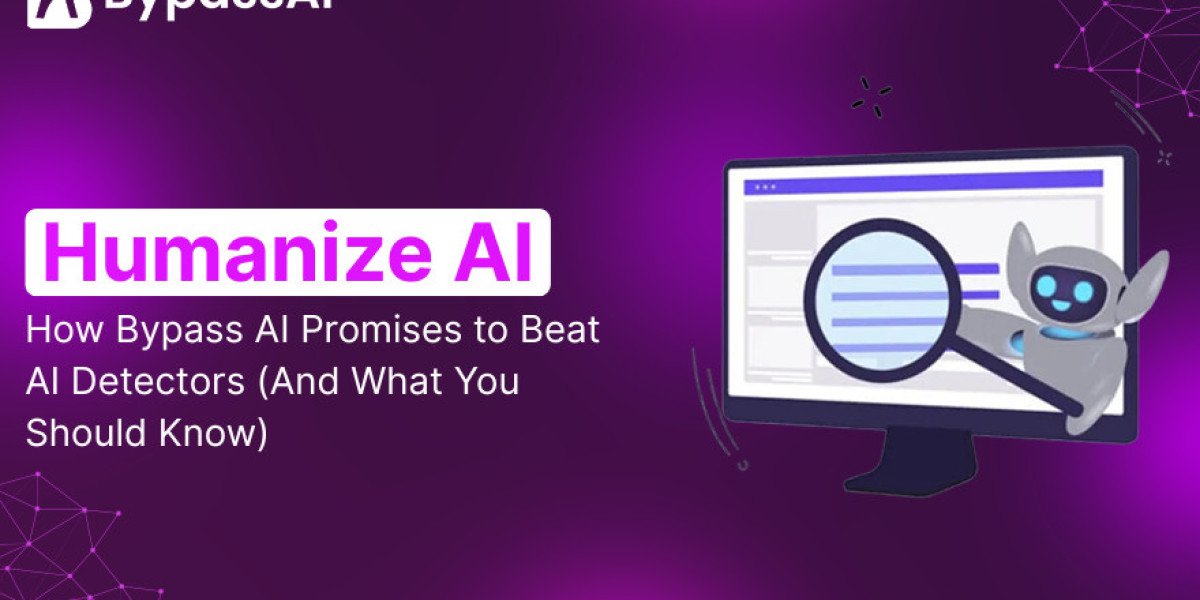AI detectors are everywhere from classrooms to content platforms and they’ve sparked a wave of tools promising to outsmart them. One of the most talked about is Bypass AI, which claims it can turn obvious AI text into something human-like in seconds. But can it really beat the detectors, or is it just clever marketing? Let’s find out.
Why Everyone’s Suddenly Talking About AI Detectors
If you’ve used ChatGPT, Jasper, or any other AI writing tool, you’ve probably worried about one thing: “Will someone know this was written by AI?” Schools, clients, and even publishers are rolling out AI detectors to catch machine-generated content. That’s created an entire new industry of “bypass” tools software that claims to make AI text undetectable.
One of the most popular? Bypass AI. It markets itself as a quick fix to turn robotic writing into something that feels (and tests) human. But does it really work?
What Bypass AI Actually Does
At its core, Bypass AI is a rewriting engine. You paste in your draft, choose a tone, and it spits out a smoother version. The promise is twofold:
Humanize AI text → make it flow like natural writing.
Beat detectors → avoid getting flagged by tools like GPTZero, Copyleaks, or Turnitin.
In short, it’s like an AI “mask” that reshapes your content so it blends in better with human writing.
My First-Hand Experience With It
I tested Bypass AI on a few short blog paragraphs. The first drafts I fed in were very obviously AI stiff structure, repetitive phrasing, and zero personality. After running them through Bypass AI, the text did feel smoother, less predictable, and easier to read.
But here’s the catch: when I ran the results through multiple detectors, the outcomes were mixed. One flagged it as “likely AI,” another called it “mostly human,” and another sat right in the middle. That told me something important no tool can guarantee invisibility.
Where Bypass AI Shines
Quick fixes: It’s fast and requires almost no effort.
Tone flexibility: I could choose casual, professional, or conversational outputs.
Readability: Sentences came back shorter and more natural.
The Limitations You Shouldn’t Ignore
Not bulletproof: AI detectors evolve constantly. Today’s “undetectable” might get flagged tomorrow.
Generic feel: Some rewrites were smooth but bland, missing personality.
Ethical concerns: Using it to “hide” AI writing in academic or professional contexts can backfire.
So, Can It Really Beat AI Detectors?
The truth? Sometimes, but not always.
Bypass AI can lower the chance of getting flagged, but it’s not foolproof. Think of it as makeup for your content it can cover up rough spots, but if someone looks closely, they’ll notice.
What You Should Do Instead
If you want content that passes as human and connects with readers, here’s what worked for me:
Use AI to draft quickly.
Run it through Bypass AI for a polish.
Add your own voice, opinions, and real-life examples.
That last step is the one that detectors can’t replicate and it’s also what makes readers trust you.
Final Thoughts
Bypass AI delivers on part of its promise: it makes AI text sound smoother and sometimes helps it slip past detectors. But calling it a guaranteed shield is an exaggeration. The smartest way to use it is as a helper, not a hiding tool. Let it do the heavy lifting, then step in to make the writing yours.
Because at the end of the day, what wins trust isn’t just bypassing an AI detector , it's sounding like you.







